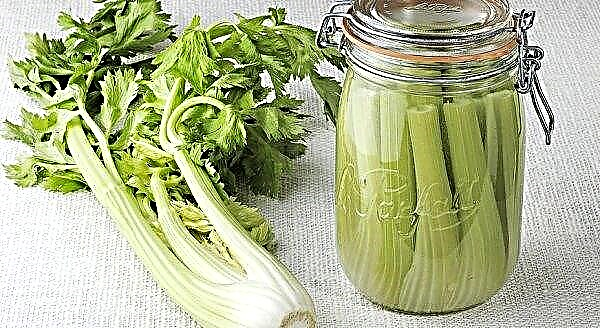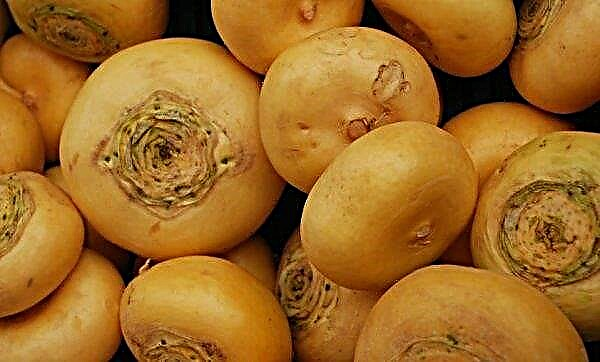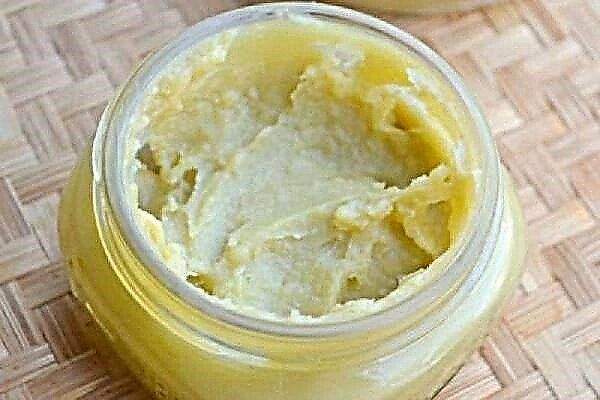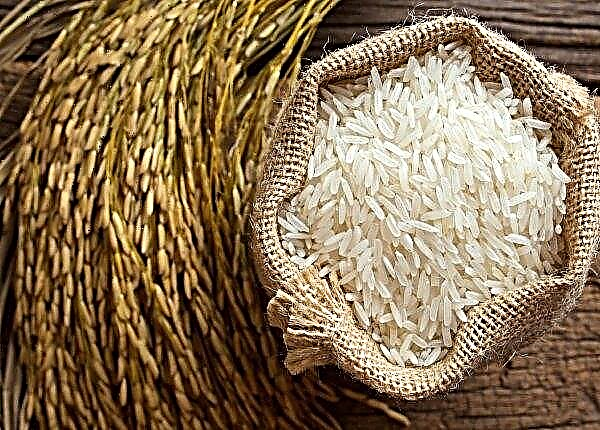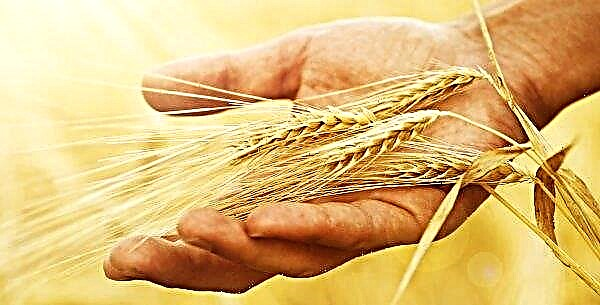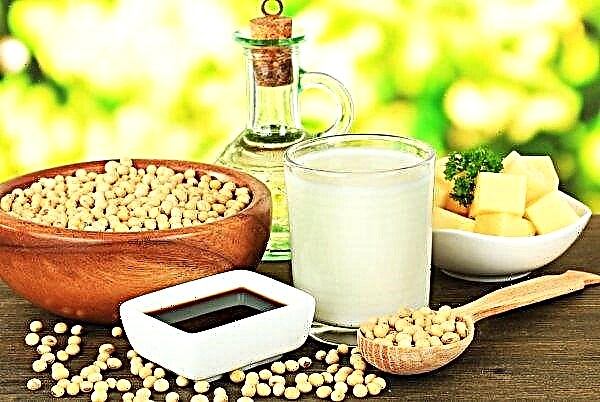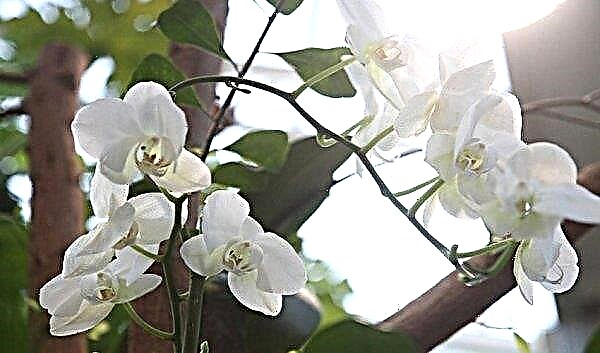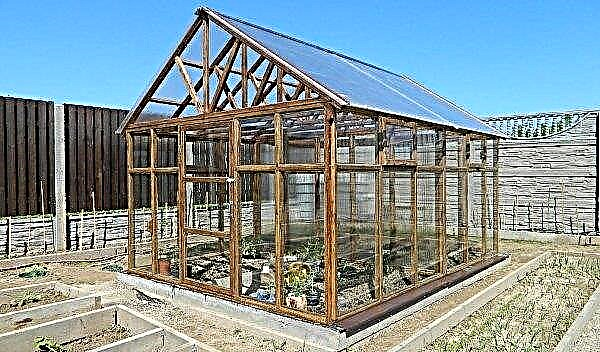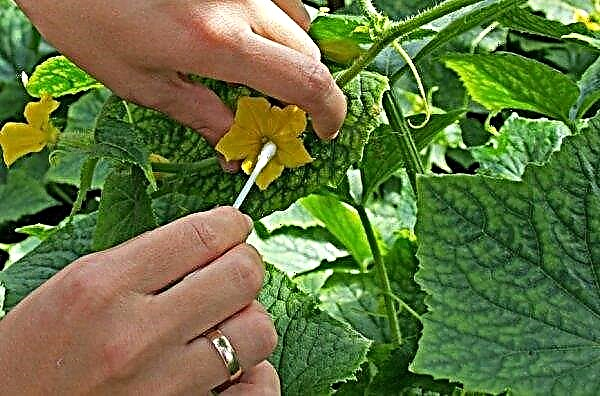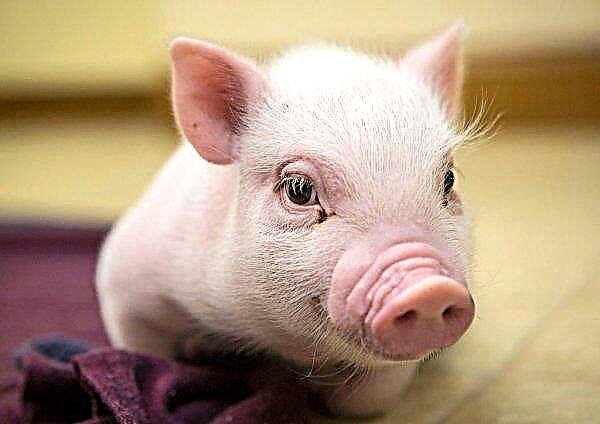There are strawberry varieties that are not registered and without certification, but are nevertheless popular among the population. Such a well-known variety, tested over the years, is the strawberry Maxim. It is still not listed in the State Register of the Russian Federation and not zoned, although it has long been grown in the vast country.
Description and History of Variety Breeding
The name of the strawberry variety Maxim arose as redone from its full name Fragaria ananassa Gigantella Maximum, which means wild strawberry Gigantella maxi.
There is no accurate documented information about it, but it is known that the variety is of Dutch origin. It became popular among summer residents in the 80s of the XX century due to its large berries.
Did you know? In the early 1980s, the largest strawberry weighing 231 grams was obtained. Unfortunately, the taste characteristics of such a berry were not up to par.
Strawberry bushes of this variety grow tall and powerful. Their height often reaches half a meter and above, and the roots differ in thickness. Peduncles also have larger sizes in comparison with conventional varieties.
They can grow up to 30 in one bush per season, and on each copy there will be 6-8 flowers. Young plants let out many mustaches. The berries grow large, especially the first ones, can reach 120 g, but the average size is in the range of 50-60 g. When ripe, they turn red from the stalk to the tip and in full maturity acquire a dark red color. The light tip is a sign of a slightly unripe fetus. The pulp is also red, dense, but juicy, often having voids.
When ripe, they turn red from the stalk to the tip and in full maturity acquire a dark red color. The light tip is a sign of a slightly unripe fetus. The pulp is also red, dense, but juicy, often having voids.
If nothing interfered with ripening, then the fruits have a harmonious taste with sugar and acidity, in which strawberry notes are felt.
Variety Characteristics
Strawberry Maxim has its varietal features.
Disease and pest resistance
It has poor resistance to diseases and pests of this plant crop. Most often, he suffers from fungal diseases in the rainy period.
Drought and winter hardiness
It has high winter hardiness, subject to the availability of snow. For the winter in cold regions with a lack of snow, it is advisable to mulch the plantings so as not to cause the root system to freeze.
The variety tolerates drought on average. Lack of moisture affects the quality of the fruit and leads to the formation of voids in the pulp. To get a good crop, watering is necessary.
Timing of flowering and ripening
Flowering occurs in May. Berries are harvested as they ripen from mid-June - early July to the first days of August.
Productivity
Strawberry Maxim gives a fairly large crop of large berries - 1 bush gives up to 3 kg under optimal conditions. With normal care, at least 1 kg of berries is removed from one bush.
Transportability
Due to its fairly dense structure, this variety has good transportability. Fruits can be transported home from the dacha without problems, and can be transported over long distances.
Important! Although Strawberry Maxim can be grown on the same bed for up to 8 years, it is better to renew the plantings every 3-4 years, as the berries grow smaller over time and yields fall.
Advantages and disadvantages of the variety
- Strawberry variety Maxim will be able to interest gardeners with a number of advantages:
- large size berries;
- high productivity;
- beautiful presentation of strawberries;
- great taste;
- the universality of the use of berries;
- ease of reproduction;
- high winter hardiness;
- the ability to sugar accumulation with a lack of sun on cloudy days;
- excellent transport tolerance;
- the possibility of growing for 8 years on the same bed without a transplant.
- The disadvantages include the following:
- insufficient frost resistance in snowless winters;
- poor resistance to diseases and pests of this crop.
Optimal conditions for growing
For strawberry beds, you need to choose a well-lit and ventilated area that is well protected from drafts, especially from the north winds. There should be no stagnation of water on the beds, since strawberries do not tolerate overmoistening. This plant crop prefers loamy and sandy loamy light soils. They must be fertile, permeable and have a slightly acidic or neutral reaction. Groundwater should be no closer than 0.8 m.
This plant crop prefers loamy and sandy loamy light soils. They must be fertile, permeable and have a slightly acidic or neutral reaction. Groundwater should be no closer than 0.8 m.
Each year, compost (1 bucket per 1 m²) is added to the soil to receive the necessary nutrients.
Important! Strawberries can be re-planted in the same place only after 4–5 years. For this berry, nightshade crops will be bad predecessors and neighbors.
Landing rules
Landing area is prepared in the fall. If the soil is acidic, then liming is carried out by adding chalk, lime, wood ash to the soil when digging, at the rate of 300-400 g per 1 m².
To enrich the soil, during the excavation of the site make peat or humus.
Planting material is planted in autumn or spring. Professional gardeners plant bushes from late August to the first half of September. When planting between holes and rows withstand a distance of at least 40-50 cm, since Maxim's strawberry bushes are quite large.
For each m² there should be 4 bushes. Wells make the root system of planting material the largest, and make complex fertilizers in them, which contain phosphorus, nitrogen and potassium. The mustache is removed, and roots that are too long are cut to 6–7 cm. The landing process itself is as follows:
The landing process itself is as follows:
- At the bottom of the hole make a mound of loose soil.
- The seedling is placed on such a mound, spreading the root system so that there are no excesses.
- They fill the bushes with soil to the point of growth, tamping the soil a little.
- Spend abundant watering.
Important! For planting, you need to choose a good quality material. When buying, you need to carefully inspect the root system - it must be well developed and not have any damage, as well as white plaque. Leaflets must be glossy, erect stem 10–12 cm, and the bush is lush.
Planting Care Features
Highest yields depend on strawberry care. Variety Maxim responds well to a high agricultural background.
Soil care
After planting young seedlings, the beds are watered for two weeks every two days. It is also necessary to pay attention to hydration during the period of ovary formation and berry growth. During this summer period, heat is usually established.
For hydration, it is better to organize drip irrigation, since moisture on the fruits can cause rotting, and irrigation during flowering can damage the buds. Humidification is best done in the morning or evening hours. The earth should not be compacted after irrigation, as this will significantly reduce the flow of oxygen and water to the root system of strawberries. Because of this, berries can become smaller.
The earth should not be compacted after irrigation, as this will significantly reduce the flow of oxygen and water to the root system of strawberries. Because of this, berries can become smaller.
Did you know? Strawberries can be eaten by people with diabetes. The consumption rate is up to 400 g per day. It is better to divide it into several receptions as a snack between meals and combine with yogurt or kefir.
After wintering, the site with planting must be constantly loosened until color appears. This process is carried out after wetting. When flowering, it is stopped so as not to damage the buds. During cultivation, weed removal, which draws moisture and nutrients, should be carried out. In late summer, we also need to weed the beds.
During cultivation, weed removal, which draws moisture and nutrients, should be carried out. In late summer, we also need to weed the beds.
To facilitate the care of planting this sweet berry, it is recommended to carry out the mulching process.
This will help to better retain moisture, protect the earth from drying out, and also prevent the appearance of weeds and rotting of berries in contact with the soil. Sawdust, compost, straw, needles are good as mulch. Recently, mulching is carried out using a special dark agrofilm, which is fixed on the site. Planting seedlings is carried out in the holes made in the film.
Sawdust, compost, straw, needles are good as mulch. Recently, mulching is carried out using a special dark agrofilm, which is fixed on the site. Planting seedlings is carried out in the holes made in the film.
Top dressing
To obtain a good strawberry crop, the introduction of nutrients important for the plant culture is necessary. The first year after planting, strawberry beds can not be fed, but in subsequent years, feeding is mandatory.
Gardeners recommend 4 feedings:
- In the spring after removing the shelter for the winter. It is necessary to introduce nitrogen and phosphoric fertilizers into the soil, which will allow the bushes to quickly grow leaflets and strengthen the roots. You can feed the bushes with urea (1 tbsp. L / 10 l). A well-diluted and infused day chicken droppings (200 g / 10 l) is also suitable.
- During the formation of buds. During this period, potash and calcium elements are used. It is good to use ash top dressing - pour 1 glass of 2 liters of boiling water, insist 2 hours and add to the volume of a 10-liter bucket. Then dissolve 2 g of potassium permanganate, 3 g of boric acid, drip 10 drops of pharmacy iodine. Pour 1 cup under each solution with the resulting solution.
- During the growth of the fruit. Use complex fertilizers that will have a beneficial effect on the coloring of strawberries (Kemira Lux or Universal).
- After collecting the last berries, a fourth top dressing is carried out. She will be the key to a good harvest next season. In this case, potassium-phosphorus fertilizers are applied to the soil. It is good to use mineral fertilizers "Autumn" or "Fertika", you can make humus along with ash.
The most universal natural top dressing is a solution of mullein or chicken droppings. Some gardeners make 2-3 yeast dressings throughout the season.
Pruning
This variety actively gives a mustache. So that the berries are not small, they leave only the first outlet from the bush for propagation, and all the others are carefully torn off with their hands or cut off with scissors.
After harvesting, the leaves of the bushes begin to turn yellow and dry. They need to be removed so that new leaflets grow later. In large areas with planting, the leaves are mowed. But on small beds dry leaves are cut with scissors in dry, but not sunny weather.
Winter preparations
Strawberry seedlings need to be prepared for the cold season. From August, the introduction of nitrogen-containing fertilizers must be stopped, as they cause an increase in green mass. During this period, you need to use potassium-phosphorus top dressing.
With snowy winters, no shelters are needed. If winters are without an abundance of snow, then in early November the beds should be mulched with straw or sawdust. Such a mulch will well protect the root system from cold gusts of wind and frost.
If there was no rainfall in the fall, then in October it is necessary to carry out abundant watering to prepare for wintering.
Harvesting and storage
Strawberry Maxim bears fruit once a year, but fruiting lasts from late June to August. Berries are picked from the garden as they ripen. The fact that they are ready will tell you about the appearance - a red uniform color. Harvesting strawberries is best in the morning or evening. It is advisable to pick the berries with ponytails, as they are stored longer. Then they must be carefully placed in wooden boxes, the bottom of which is covered with sheets of paper. A small amount of berries can be stored in a glass jar on the shelf of the refrigerator.
It is advisable to pick the berries with ponytails, as they are stored longer. Then they must be carefully placed in wooden boxes, the bottom of which is covered with sheets of paper. A small amount of berries can be stored in a glass jar on the shelf of the refrigerator.
The optimum temperature regime for storage is + 2 ... 0 ° С. In this case, the product is stored for 3-4 days. Strawberries Maxim is better to consume fresh. But it is also suitable for processing. From it you can make jam, jam, pastille, compote. It is great for freezing.
Did you know? 100 g of strawberries contain only 41 kcal, so this low-calorie berry is often used in weight loss diets.
On the whole, Maxim's strawberries are quite unpretentious plant crops and, with proper care, will please them with a good crop on average to late dates. It gives large tasty berries for universal use, and caring for it will not take too much attention and labor.
Network user reviews
When fully ripened, the taste is good, but not outstanding, while on the high bed of my Gigintella the berries are sweet, but just on the ground - a rather fresh taste, almost no acid, and sweets too, although the jam is the same
http://forum.vinograd.info/showpost.php?s=182210db6568f25ae9e0d8dbf543626a&p=669989&postcount=7

